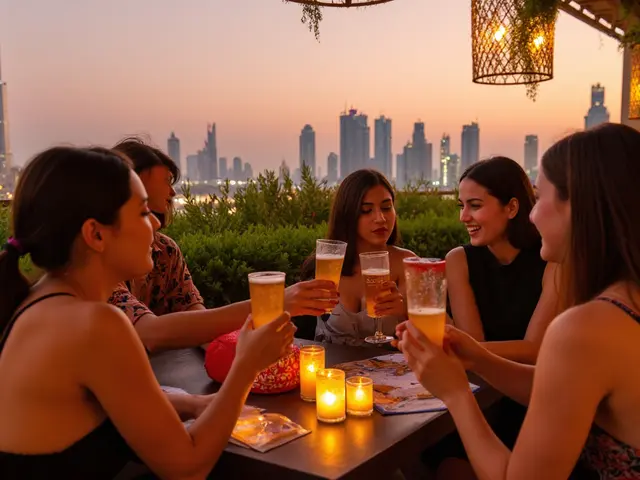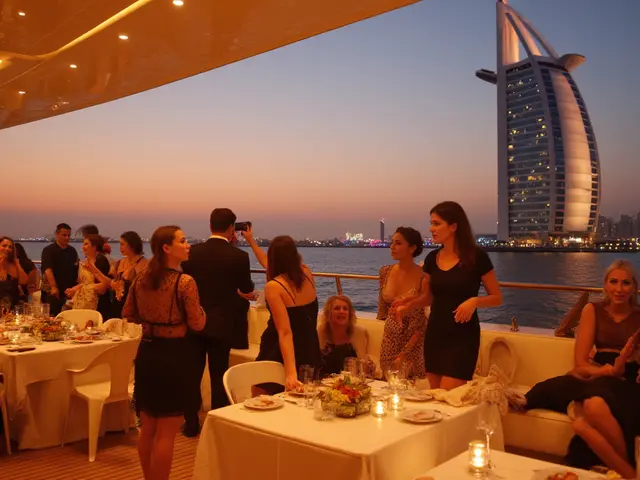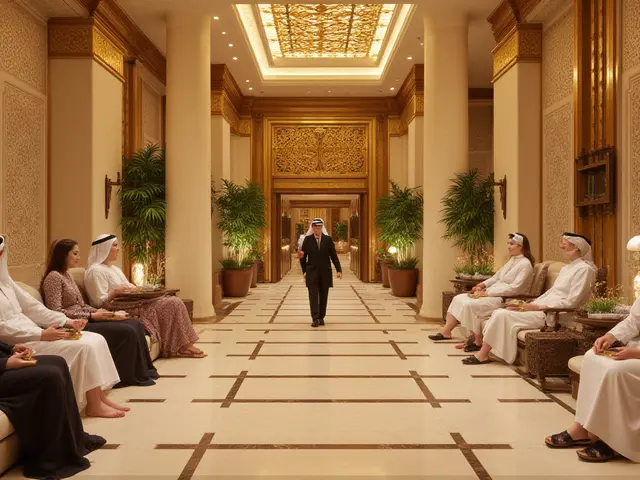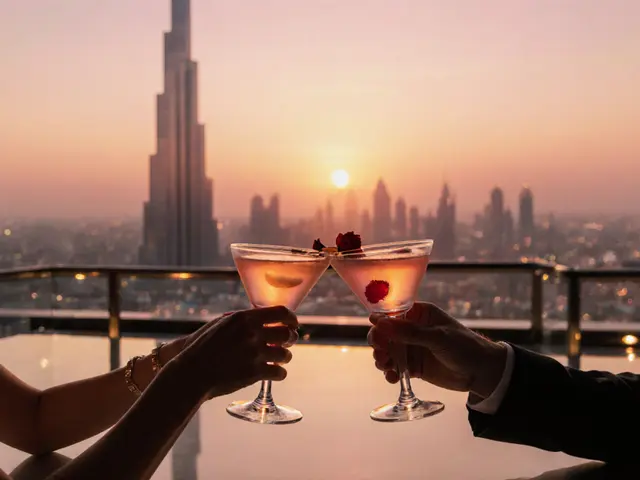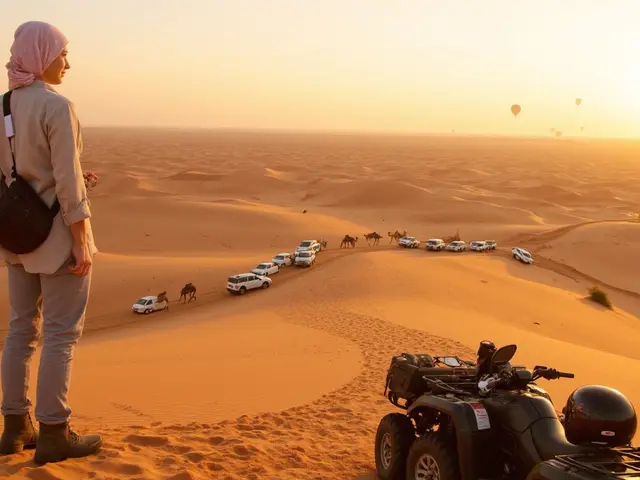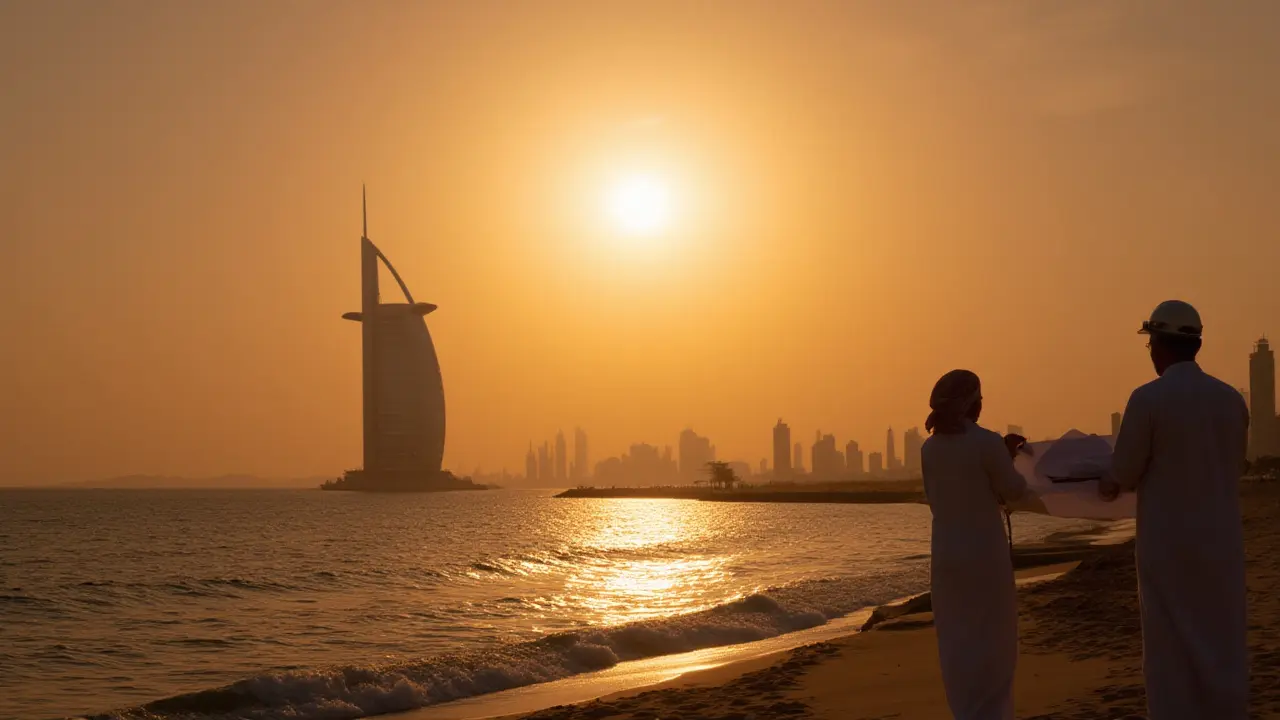
Step out on Jumeirah Beach Road, and chances are you’ll see the sail-shaped marvel slicing through Dubai’s hazy golden skyline. The Burj Al Arab isn’t just a hotel; it’s a statement—a symbol of ambition that’s impossible to ignore if you live or work in the UAE. Some say it’s Dubai’s answer to the Eiffel Tower or Sydney Opera House, but really, it’s something entirely its own. Residents and tourists alike have heard stories swirling around about seven-star splendor, gold-plated interiors, and millionaire guests arriving by helicopter. But how did this impossible-looking structure come to define Dubai’s luxury scene—what’s the real story behind the Burj Al Arab’s rise from a sketch on paper to a global icon?
Dream Big: The Vision and Construction in Dubai
Back in the 1990s, the demand for luxury tourism in Dubai was just kicking off. Sheikh Mohammed bin Rashid Al Maktoum, who was then Crown Prince, pictured a Dubai skyline that would stun the world. Nothing subtle would cut it. The idea for the Burj Al Arab came from the determination to stamp Dubai on the world map—loud and clear. And so, the “Tower of the Arabs” (the literal translation) started as, quite literally, a drawing on a napkin. British architect Tom Wright of Atkins was given a brief you won’t find anywhere else: design a building that would be synonymous with Dubai itself, something instantly recognizable even from afar.
Forget palm trees and sand dunes; the chosen spot was actually out at sea. More specifically, artificial land—a manmade island 280 meters off Jumeirah Beach. This was radical, even for Dubai. The construction team imported more than 230 concrete piles and drove them nearly 40 meters into the seabed to make sure this icon wouldn’t budge during storms. By the way, if you drive by during December storms on Jumeirah Beach, the waves slapping the breakwater show just how much planning went into stabilizing the building. Unlike most skyscrapers, Burj Al Arab rests on sand, anchored by friction, defying engineering norms.
The iconic sail shape—officially inspired by a dhow, the traditional Arabian boat—wasn’t just for show. It was also about identity, capturing the spirit of the Gulf’s maritime history while screaming modernity. The design uses two soaring “wings” enrobing a massive open atrium—one of the world’s tallest at 180 meters. It’s like standing in a cathedral of light and color when you step inside.
For residents who’ve watched Dubai transform, it’s wild to remember that in the late ‘90s, Jumeirah was mostly empty land. Local rumors even say it took a full three years just to build the platform for the hotel before they could even start with the main tower. More than 3,000 contractors and 250 designers were involved. The amount of steel used in the skeleton? Enough to build the Eiffel Tower—twice over. And then there’s the Teflon-coated facade, which keeps the structure brilliant white in the desert heat, a small miracle given how the summer sun can turn any surface into a scorcher.
Hot tip for anyone living nearby: if you ever get a chance, do the Jumeirah Beach dawn walk—the best time to see the Burj catching rays, the reflection making the sea shimmer. It looks different every season, especially during the National Day fireworks when the whole building comes alive in the colors of the UAE flag.
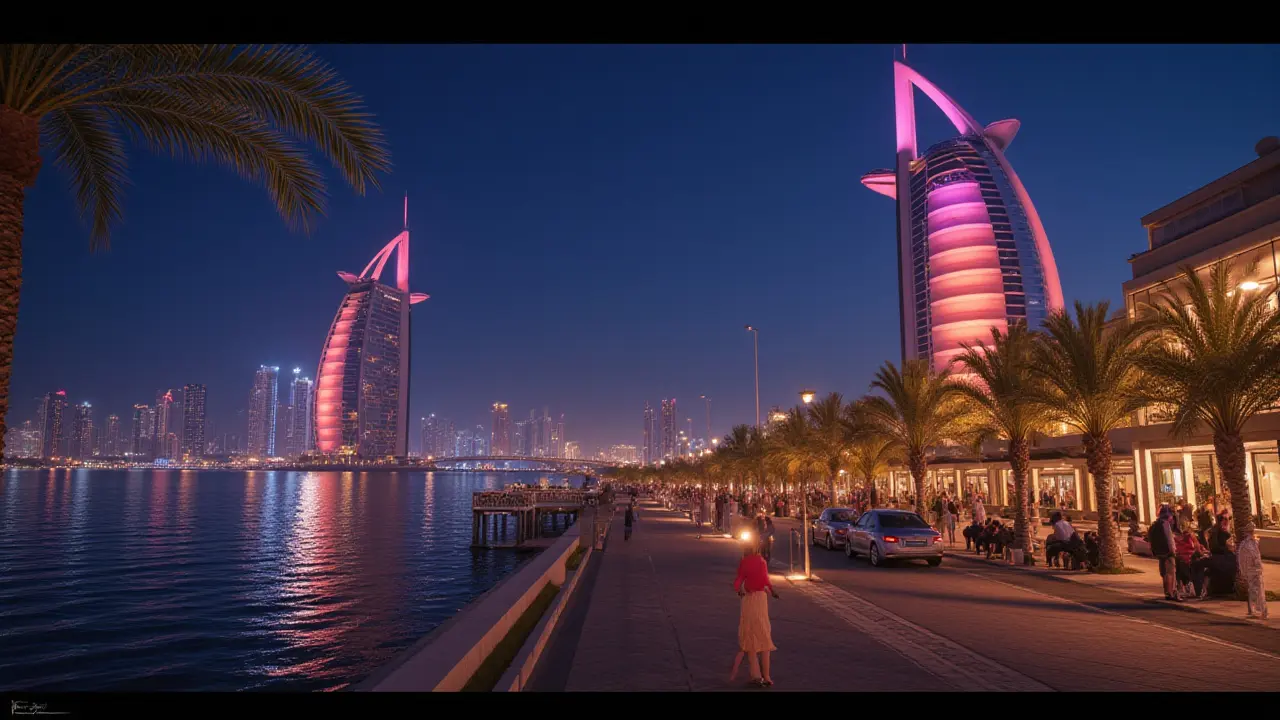
The Burj Al Arab Experience: Luxury and Myths in Dubai
The stories swirling around the Burj Al Arab aren’t all fantasy. When the hotel opened in December 1999, it set a bar for Dubai attractions that no other “luxury hotel” had really hit before. There’s the famous seven-star label, which, for the record, was never its own claim—but after a British journalist blurted it out, the legend stuck. Officially, it’s a five-star deluxe, but honestly, few would argue with the claim after walking into that lobby.
Walking through the doors, you’re slammed with colors, gold leaf everywhere (about 1,790 square meters of it), an 18-story atrium, and one of the world’s biggest choreographed indoor fountains. The vibe is unashamedly extra, in that “big Dubai energy” kind of way. Guests are whisked up in one of the panoramic lifts for the full VIP experience—the butler service is real and so are the Hermès amenities in every suite. There are no standard rooms here; every space is a two-story suite. The Royal Suite (if you’re curious) goes for tens of thousands of dirhams a night and has played host to everyone from Roger Federer to Bollywood royalty. I once asked a front desk manager how often celebrities actually stay—her answer: "almost every other week."
The hotel famously sits on a helipad—so, yes, if you’ve driven along Jumeirah Beach Road and seen a tennis court way up in the sky, you’re not seeing things. In 2005, Federer and Agassi actually played a set up there, casually lobbing balls across the city skyline. The helipad also hosted Tiger Woods teeing off, and in 2021, it turned into an F1 car pitstop for Red Bull Racing—just to prove it was possible. If you’re into Instagram, this is the place where #OnlyInDubai feels genuinely true.
Dining here is as much theater as food. The Al Mahara (“The Oyster Shell”) sits behind a massive aquarium—so while tucking into caviar and wagyu, you’re basically surrounded by swirling schools of fish. Local favorites include the Friday brunch at Al Muntaha, especially popular with residents who want to splash out for a birthday or gather friends for something totally out of the ordinary. Ramadan season also transforms the hotel; the special iftars blend Emirati heritage with ultramodern presentation—it’s really something to invite non-local friends to if you want them to leave with wide eyes. If you plan to book, best to do it early—locals book up these special events fast as soon as reservations open each season.
And it’s not just about tourists in Burj Al Arab. Many Dubai-based companies choose the hotel for closing big business deals, and sometimes even wedding photoshoots. Ask any local wedding planner and they’ll tell you that a few shots here in the hotel lobby are seen as a golden ticket for the albums. There’s something about those vivid colors, the whiff of oud in the air, and the sound of water from the fountain that makes the whole thing feel distinctly “Dubai.”

The Lasting Impact: Burj Al Arab’s Place in Dubai’s Story
So what does the Burj Al Arab mean for people actually living in Dubai? For starters, it changed how outsiders see the city. Before the Burj opened, Dubai was mostly desert, bustling souks, some beaches, and the occasional gold souk glimmer. Afterward, it became shorthand for ultra-modern opulence—think Dubai attractions, shopping festivals, theme parks, and that urge to keep breaking world records. It was the first domino in a line that led to things like the Palm Jumeirah, the Dubai Mall, and the world’s tallest tower: the Burj Khalifa.
The hotel has become a symbol in local pop culture, too. You’ll spot it everywhere—on Emirates airline ads, Dubai Tourism campaigns, and even Emirati artist sketches of the city skyline. For new expats, it’s almost a rite of passage to visit the Skyview Bar just to say they’ve had a drink in one of the world’s most exclusive hotels. It’s also the go-to backdrop for engagement shoots, birthday surprises, and milestone anniversaries. Kendra and I once celebrated our anniversary at Al Iwan, feasting on Arabic mezze as the sun kitted out the sea in that orange Dubai glow. It felt like we stepped into another world, just a fifteen-minute drive from our flat by Kite Beach.
Here’s something you might not know: the Burj Al Arab isn’t just an island of luxury for the super-elite. Dubai residents can actually book tours of the “Experience Suite”—yes, even if you’re not sleeping over. These guided tours cover local art, design details, and the history of the hotel’s construction. Teachers often bring school groups to discuss how the daring vision for this hotel set the tone for Dubai’s urban imagination. It’s wild to think your kids’ class trip might happen inside the Burj Al Arab one day—it’s that embedded into local life.
The hotel’s place in Emirati traditions sits alongside majlis gatherings, Ramadan feasts, and UAE National Day fireworks—locals gather at Jumeirah public beaches and watch the colors ripple up and down the Burj’s sail-shaped wings. Even for daily commuters, whether you’re stuck in Sheikh Zayed Road traffic or jogging along Sunset Beach, spotting that curved outline signals you’re home. It’s both grounding and uplifting, an anchor on the horizon that captures the spirit of the city: daring, bold, but rooted in hospitality and heritage.
If you’re living in Dubai or even just visiting, keep an eye out for offers during Dubai Shopping Festival and Dubai Summer Surprises—sometimes, the famously impossible “inside access” gets a little easier with special afternoon teas or wellness packages at the Talise Spa. Residents often bundle these with a walk along Jumeirah Corniche or a lunch at the nearby Madinat Jumeirah souk, soaking in views of both old and new Dubai in a single afternoon.
At the end of the day, Burj Al Arab isn’t just for selfies and glitzy headlines. It’s part of daily life here—an unmistakable shape on the skyline but also a daily reminder that in Dubai, no dream is too big, no design too outrageous, and that what seems impossible is just another project waiting to be built. So the next time you’re down by the water or catching your sunrise run, give a nod to the “Tower of the Arabs.” It’s as much a part of Dubai today as the call to prayer, the aroma of fresh karak, or the sound of laughter spilling from a majlis after midnight.

